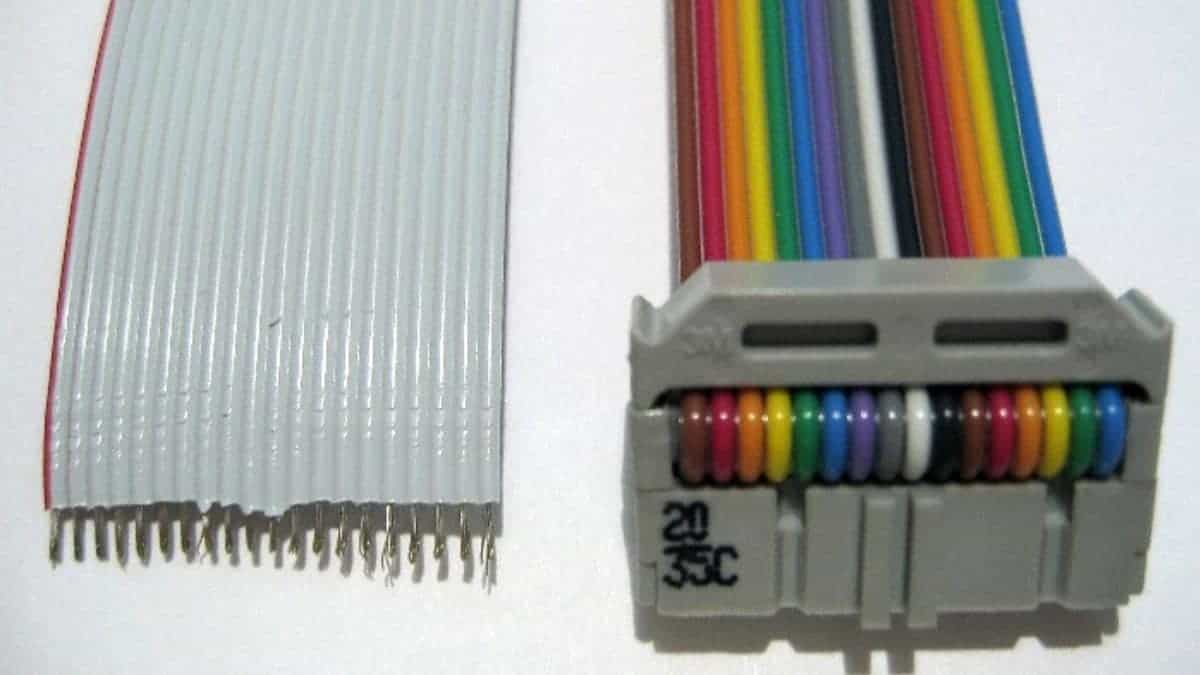What are IDC connectors?

IDC connectors are actually connectors that can be plugged into different equipment including computer systems, telecommunication, transportation components, and more. But what’s so special about IDC connectors is that they can be attached to a wire cable to immediately create an interface for a high-quality connection between the cable and the equipment.
Insulation-displacement contact (IDC) connectors feature a design with sharpened blades, which can force their way through the insulation of a wire to create an electrical contact. This means that you don’t need to strip down the insulation to expose the conductor material on which you can make your connection.
Why IDC connectors?
This is good news for novices who end up wasting a huge chunk of wire in an attempt to create a perfect connection (I, being a mechanical engineer, might have done that more times than I’d like to admit).
However, IDC connectors also help professionals in speeding things up during installations as there is literally no need for stripping, twisting, or even screwing processes. It is believed that you can achieve up to 50% faster installation times with IDC connectors.
IDC Connectors From TME
TME, who was founded by Zbigniew Kuczyski and with an industrial experience of over 33 years, has been supplying high-quality electronic components since 1989. It sends around 5,000 shipments daily to 150+ countries worldwide. They maintain several quality certifications including ISO:9001 and ISO:14001 which are essential as an Electronic Component Distributor.
TME has more than 2000+ IDC connectors from well-known manufacturers including 3M, ADAM TECH, Amphenol, CONEC, and more. They also have 17 types of IDC connectors you can choose from. For their whole collection of IDC connectors, you can view it here – https://www.tme.com/us/en-us/katalog/idc-connectors_112943/.
Benefits and Advantages of IDC Connectors
- You don’t need special tools or even soldering for installing IDC connectors.
- There’s no need for stripping down insulation from wire to expose the conductor part for the installation of IDC connectors.
- You can process dozens of wires at the same time and populate IDC connectors faster than any other type of connector.
- IDC connectors create highly reliable connections as they include strain relief mechanisms that can clamp a wire and hold it in place.
- You can achieve up to 50% faster installations as there’s no need for pre-stripping or twisting wires.
- IDC is a popularly accepted design, and it has been around since the 1950s, so your equipment might most likely feature an IDC connection.
- IDC connectors create gas-tight and vibration-proof connections, which means you can use them in heavy machinery and tougher environments.
2 Types of IDC Connectors
IDC connectors come in many shapes, sizes, and specifications. For example, at TME you can find IDC connectors with different pins ranging from 2 all the way up to 72. 10-pin and 16-pin are more popular with warehouse stock as high as 176 thousand pieces. You can also find IDC connectors with as well as without cable clamps that are straight and angled up to 90°.
All these IDC connectors can be categorized into two main categories:
- Ribbon Cable Connectors
These are popularly used for various interfaces including D-type and GPIB connections. You will find these typically on computers and printed circuit boards (PCBs).
- Telecom devices
Telephones and network plugs also use IDC connectors as they ensure reliable connection for telephonic appliances.
Final Thoughts – How You Can Use IDC Connectors?
IDC connectors have been around since the 1950s, so you can expect to find their application in everyday devices. For example, the cable of the power supplies used in a computer uses an IDC connector to make an electrical connection with the motherboard.
They were used for super low-voltage applications such as in telecommunications – to make a connection for telephones and network plugs – but today they are also used in power equipment in industries. The reason is that they provide a gas-tight connection that keeps the connection secured against dust, dirt, and vibrations.


